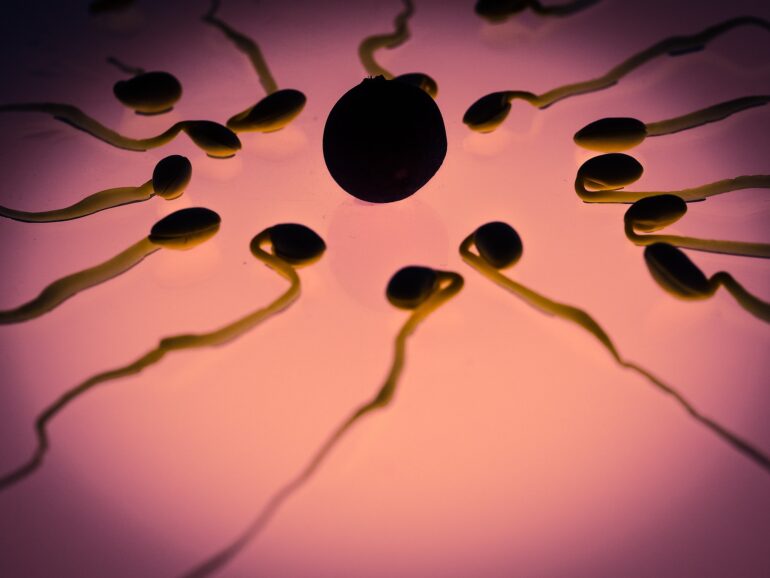TL;DR:
- A recent review explores the application of AI and machine learning in sperm selection.
- Semen analysis plays a crucial role in diagnosing male factor infertility.
- AI can automate and expedite the laborious process of sperm selection, improving efficiency.
- Standardizing sperm morphology assessment using AI algorithms yields high accuracy.
- Training AI systems with high-quality sperm imaging data enhance accuracy.
- AI can evaluate the DNA fragmentation index, ensuring objective sperm quality assessment.
- Holographic imaging and mathematical models aid in assessing sperm motility.
- Integration of AI and machine learning techniques significantly improve conception rates in assisted reproductive technologies.
Main AI News:
In a recent review published in Fertility and Sterility, experts have compiled a comprehensive analysis of the role of artificial intelligence (AI) and machine learning in the critical task of sperm selection. The researchers conducted an extensive search across reputable databases, including PubMed Central, Web of Science, and MEDLINE-Academic, identifying a total of 261 articles. However, after rigorous evaluation based on predetermined criteria, only 34 articles were deemed relevant for inclusion in the review.
Infertility affects a staggering number of individuals worldwide, with male-related factors contributing to nearly 50% of these cases. Semen analysis plays a pivotal role in diagnosing and treating male factor infertility, encompassing the examination of sperm morphology, motility, and DNA integrity. The daunting challenge faced by embryologists lies in selecting a single sperm from millions present in a given sample, a labor-intensive process fraught with the risk of selection errors.
Semen parameters serve as crucial indicators for predicting the success of fertilization and subsequent pregnancy outcomes. When semen analysis reveals suboptimal parameters, assisted reproductive technologies (ART) can be employed to overcome barriers within the female reproductive tract, thereby enhancing the chances of conception. Despite technological advancements, the efficacy of ART procedures remains hampered globally due to the absence of an effective sperm selection method.
Currently, the final selection of a suitable sperm for intracytoplasmic sperm injection (ICSI) is primarily carried out manually by embryologists adhering to the criteria established by the World Health Organization (WHO). However, the time constraints imposed on embryologists during this process can impede the success of ART. This is where the potential application of AI emerges as a game-changer in enhancing the efficiency of sperm selection.
Previous studies have demonstrated the consistent and effective utilization of AI in identifying embryos with optimal developmental and implantation potential. Furthermore, AI can substantially reduce the time and effort expended by embryologists in visually assessing and grading embryos manually. By employing machine learning algorithms capable of processing large datasets, similar to those encountered in embryo assessment, the automation of sperm selection can be achieved through the integration of genetic and visual data. The implementation of AI and machine learning in the ART laboratory has the potential to significantly enhance the capabilities of embryologists in selecting the most viable sperm.
Favorable sperm morphology is characterized by specific features such as a smooth and oval head, the absence of large or multiple vacuoles, appropriate acrosome coverage, a slender midpiece, and residual cytoplasm comprising up to one-third of the head’s size. AI algorithms can effectively standardize and expedite the analysis of sperm based on existing models. Moreover, when combined with deep learning algorithms, sperm morphology can be evaluated with an impressive accuracy rate of approximately 98%.
The performance of AI and machine learning algorithms relies heavily on the quality of the training dataset images. To enhance the accuracy of these systems, it is crucial to train them using larger and high-quality sperm imaging data. In cases where sperm cells exhibit susceptibility to damage in the sperm head, resulting in chromosome aberrations, DNA fragmentation, and telomere shortening, the selection process becomes even more critical. Techniques such as single-cell gel electrophoresis (SCGE), terminal deoxynucleotidyl transferase UTP nick-end labeling (TUNEL), and sperm chromatin structure assay are employed to detect DNA fragmentation.
By training machine learning algorithms using sperm images correlated with DNA fragmentation index (DFI) values, scientists have developed a standardized system that accurately evaluates the quality of an individual sperm based on the trained dataset. This eliminates concerns associated with subjective human judgment and ensures a more objective approach.
Embryologists rely on holographic imaging, computer-aided sperm analysis (CASA), and microfluidic platforms to assess sperm motility. While CASA enables high-throughput evaluation of a large number of sperm at the sample level, it does not analyze the intricacies of sperm motility. This limitation can be overcome through the development of a mathematical model based on the three-dimensional (3D) helical motion of tail beating. By employing high-resolution holographic imaging techniques, scientists can examine tail-beating patterns in freely swimming sperm.
AI systems can be trained using a wealth of data on sperm motility obtained from CASA, microfluidic chips, and holographic imaging, coupled with other male fertility parameters. This integration of AI and machine learning techniques have significantly elevated conception rates and improved successful pregnancy outcomes following ART.
Conclusion:
The integration of artificial intelligence and machine learning in the field of sperm selection presents immense opportunities for the assisted reproductive technology market. These technologies offer the potential to automate and streamline the sperm selection process, reducing the reliance on manual assessment and minimizing selection errors. With enhanced efficiency and objectivity, AI can significantly improve the success rates of assisted reproductive procedures, providing a more precise and standardized approach to sperm selection.
This technological advancement has the potential to revolutionize the market, offering new possibilities for addressing male factor infertility and bringing hope to individuals worldwide. The market is poised to witness transformative growth as AI-driven solutions pave the way for improved conception rates and successful pregnancy outcomes.

